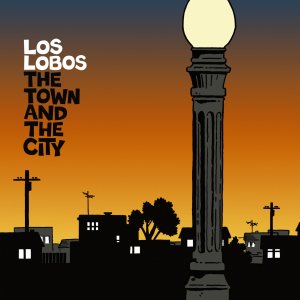
When I read the interview in Paste Magazine September 2006 issue with Los Lobos where they said that their new album The Town and the City was a return to the experimenting they started with 1992’s Kiko I was interested in hearing it. The last Los Lobos record I had purchased was their 1998 release Colossal Head, which I still pull out probably once a year.
Kiko, Colossal Head, and This Time (released in 1999) are all co-produced by Mitch Froom and Tchad Blake and are considered their “experimental trilogy.” These albums employ odd rhythms and production techniques also found in the side-project group The Latin Playboys that included Louis Perez, David Hildalgo from Los Lobos as well as Froom and Blake.
Tchad Blake was pulled into the project to provide mixing duties which gives The Town and the City a feel familar to the trilogy and the Latin Playboys.
In a similar fashion to the trilogy albums, The Town and the City fell together almost on its own. Per the video podcast freely downloadable from the band’s website, the album started with instrumental tracks that Hidalgo recorded at home that moved the album into the theme that it has. The instrumental that would become “The Valley” moved Perez to write lyrics that he describes as fitting the theme of “place” that this album has. Indeed, all of the tracks in one way or another deal with the idea of place or home that the narrators have. Louie Perez comments in “Writing” episodes of the podcasts that the majority of the songs are written in the first person, which is unique to this album. In fact, he wanted to make sure that the songs had words that fit David’s voice.
The podcast that I mention above is part of a 5-part video podcast available from the band website and is a series dedicated to the making of The Town and the City featuring interviews with Louie Perez, David Hidalgo, and Steve Berlin primarily. I think that the video podcasts are a perfect compliment to the album and I recommend downloading these and watching them. I think they serve as a nice roadmap to the album and demostrates how excited the band is regarding this release. I hope this signals the beginnings of more artists and labels taking this approach of “bonus” material available. My only disappointment is that they didn’t include the podcast on the CD itself as it is an audio plus data CD. The CD includes a script that basically launches the band’s website in your browser. I will have to back these up to a CD-R or something for posterity.
One thing that I haven’t seen much discussion about in the reviews of The Town and the City is the album artwork provided by Jaime Hernandez of the graphic novel “Love and Rockets” fame. Similar to Los Lobos, Hernandez’s work is from the Hispanic-American perspective. Since the album is so tied to the sense of Hispanic culture and growing up in East L.A. having the packaging done by Hernandez provides a nice synergy to the album. According to the video podcast episode on the artwork, the art used in the album booklet is similar to the interstitial artwork that Hernandez uses in his novels– pictures of scenes with little to no people and dialog. In the video Perez mentions that he pitched an idea to do a graphic novel of The Town and the City as a future project. I sincerely hope they can find time in their collective schedules to pull that off.
The theme of the album is surrounded in a sense of place and although it has that common thread, each of the songs can stand on its own. Stylistically, The Town and the City fits with the other “experimental” Los Lobos albums in that it is all over the map– bluesy numbers like “Hold On” and “If You Were Only Here Tonight”, salsa-fueled numbers like “Chuco’s Cumbia,” and “No Puedo Mas,” to straight up rockers like the radio-bound “The Road to Gila Bend.” Los Lobos draws its influence from all over and this album shows it. Apparently the album had a different feel to it until they added “Gila Bend” and “Free Up” which are more light and uplifting than the other tracks. In the podcast Steve Berlin says that it gave some variation to the record– a dark-to-light and fast-to-slow progression of songs.
Los Lobos is an underrated band. They are a hard-working and seemingly constant touring machine drawing from a very extensive back catalog dating back to 1978. They are most known for their cover of “La Bamba” and possibly this is the albatross from their good intention to draw attention to another cross-culture influence in Richie Valens. Because Los Lobos is considered by most to be more of an AOR band, I think that the experimental nature of the band is missed. The only Los Lobos albums I owned before this album were Kiko and Colossal Head and I didn’t dig much deeper. Since I’ve heard this album I went back and picked up This Time and The Neighborhood.
Podcasts for The Town and the City
Download The Road to Gila Bend.
Download The Town.
